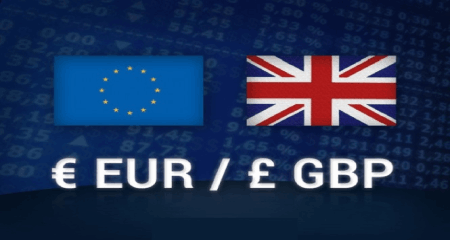
EUR/GBP discovers significant buying interest near 0.8700
The EUR/GBP pair recovered sharply after defending the crucial support of 0.8700 as the preliminary Eurozone Q3 Gross Domestic Product (GDP) contracted by 0.1% as expected. The output by firms dropped as consumer spending remained vulnerable due to the entrenched cost of living crisis. The pace at which Eurozone firms hired job-seekers was higher at 0.3% against 0.2% recorded earlier.
The Euro seems recovering against the Pound Sterling on upbeat labor demand while employment levels in the United Kingdom economy fell further in the quarter-to-September period. Earlier, the Pound Sterling discovered buying interest after mixed UK labor market data. The wage growth broadly outperformed while employment levels weakened further. Average Earnings excluding bonuses for the quarter-to-September period rose by 7.7% as expected but softened from the former reading of 7.9%. The wage growth including bonuses grew at a stronger pace of 7.9% against expectations of 7.4%. Strong wage growth is expected to keep price pressures persistent ahead.
UK employers shed 207K jobs in three months to September, which were higher than expectations of 198K and the former reading of 82K. The UK laborforce squeezed for the third time in a row. UK firms slowed hiring due to poor demand outlook amid weak consumer spending in domestic and overseas markets. A slowdown in job growth may not ease Bank of England (BoE) policymakers’ concerns about higher inflationary pressures as upbeat wage growth will prompt expectations for a higher price index.
UK employers shed 207K jobs in three months to September, which were higher than expectations of 198K and the former reading of 82K. The UK laborforce squeezed for the third time in a row. UK firms slowed hiring due to poor demand outlook amid weak consumer spending in domestic and overseas markets. A slowdown in job growth may not ease Bank of England (BoE) policymakers’ concerns about higher inflationary pressures as upbeat wage growth will prompt expectations for a higher price index.
